Chapter 4: The Consumers Choice
1/38
There's no tags or description
Looks like no tags are added yet.
Name | Mastery | Learn | Test | Matching | Spaced |
|---|
No study sessions yet.
39 Terms
Models depend on 3 premises:
Preferences determine satisfaction
Consumers face constraints
Consumers maximize well-being
What are consumer’s preference relations?
weakly prefers
strictly prefers
indifferent
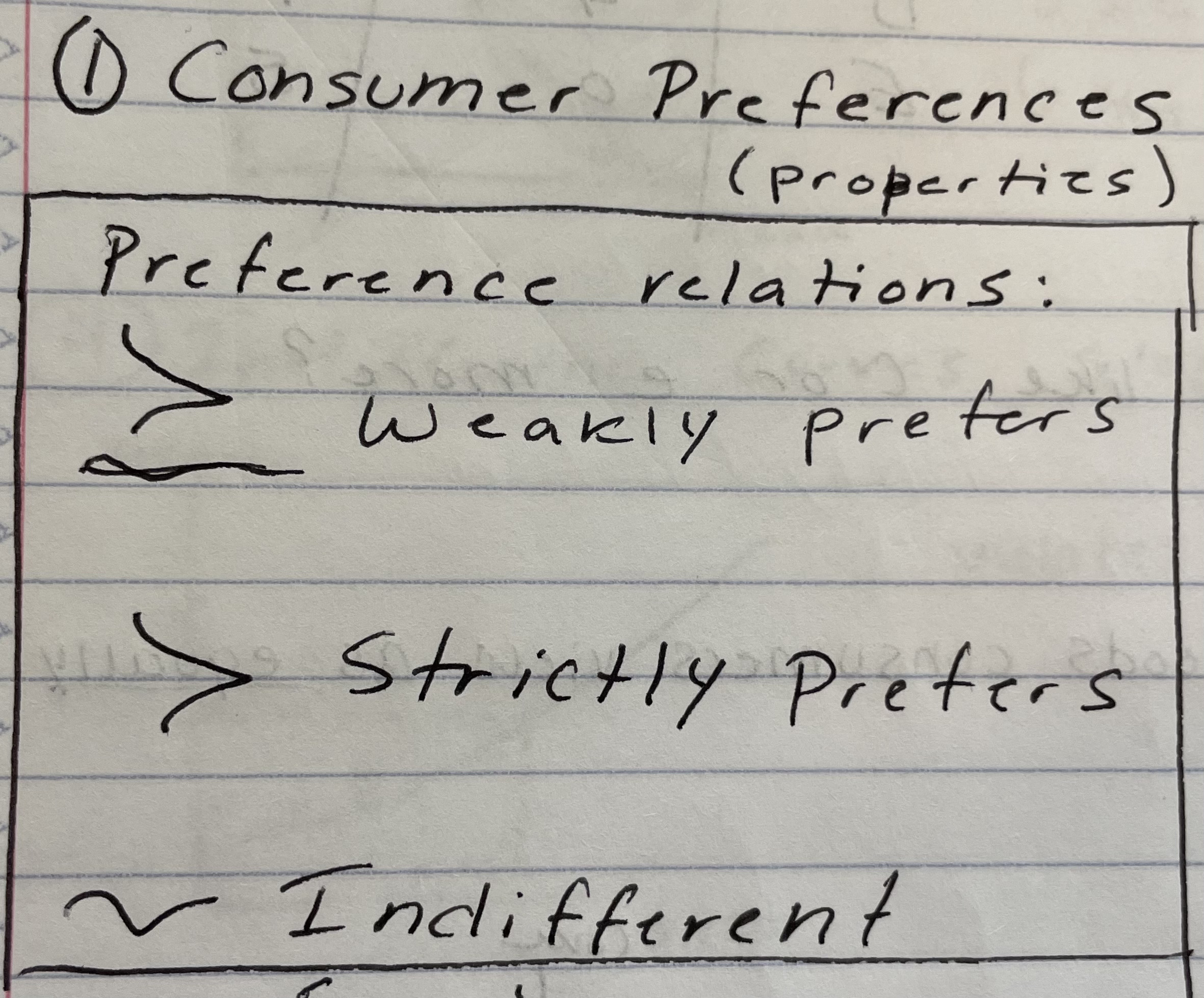
Assumptions about Preferences: Completeness
assumes that consumers do have a preference between two options
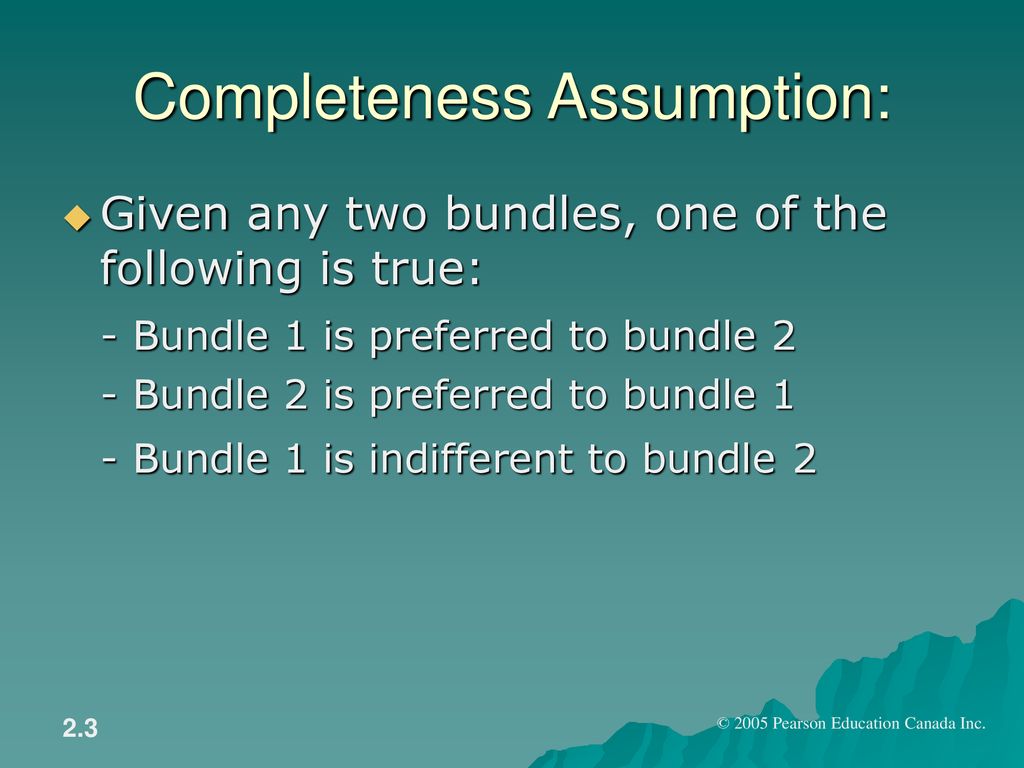
Assumptions about Preferences: Transitivity
Eliminates illogical behavior
If prefer A to B, and B to C, then must prefer A to C
Assumptions about Preferences: More is better (Monotonicity)
Having more of one good is preferred to less
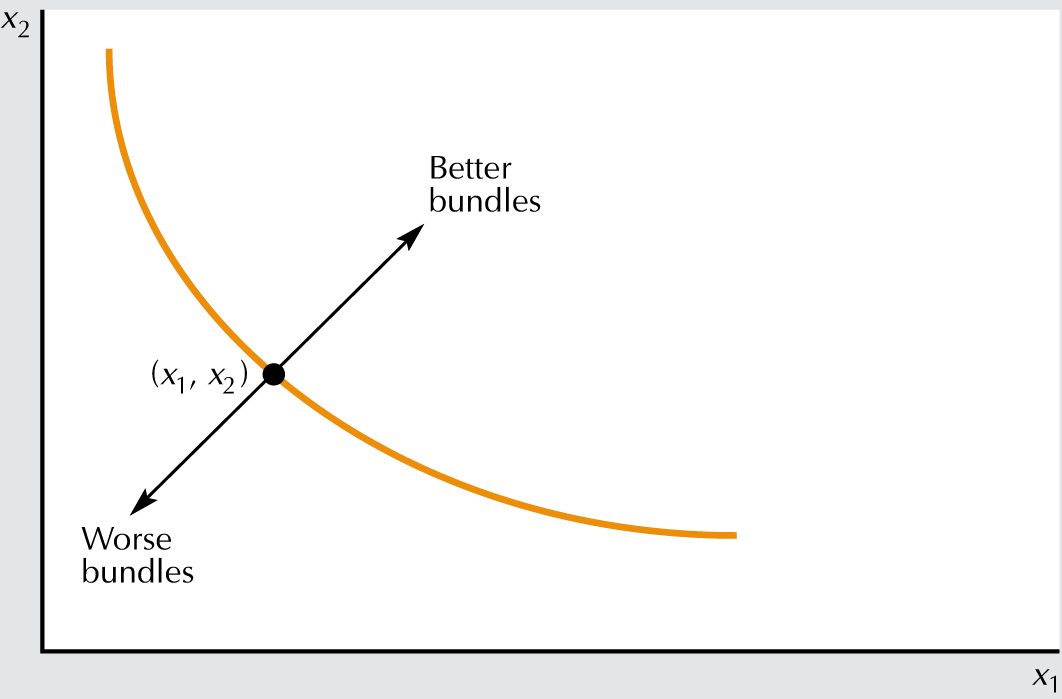
‘good’ commodity
a commodity for which more is preferred to less
‘bad’ commodity
something for which less is preferred to more, such as pollution
What is an indifference curve?
Set of all bundles of goods consumers view as equally desirable
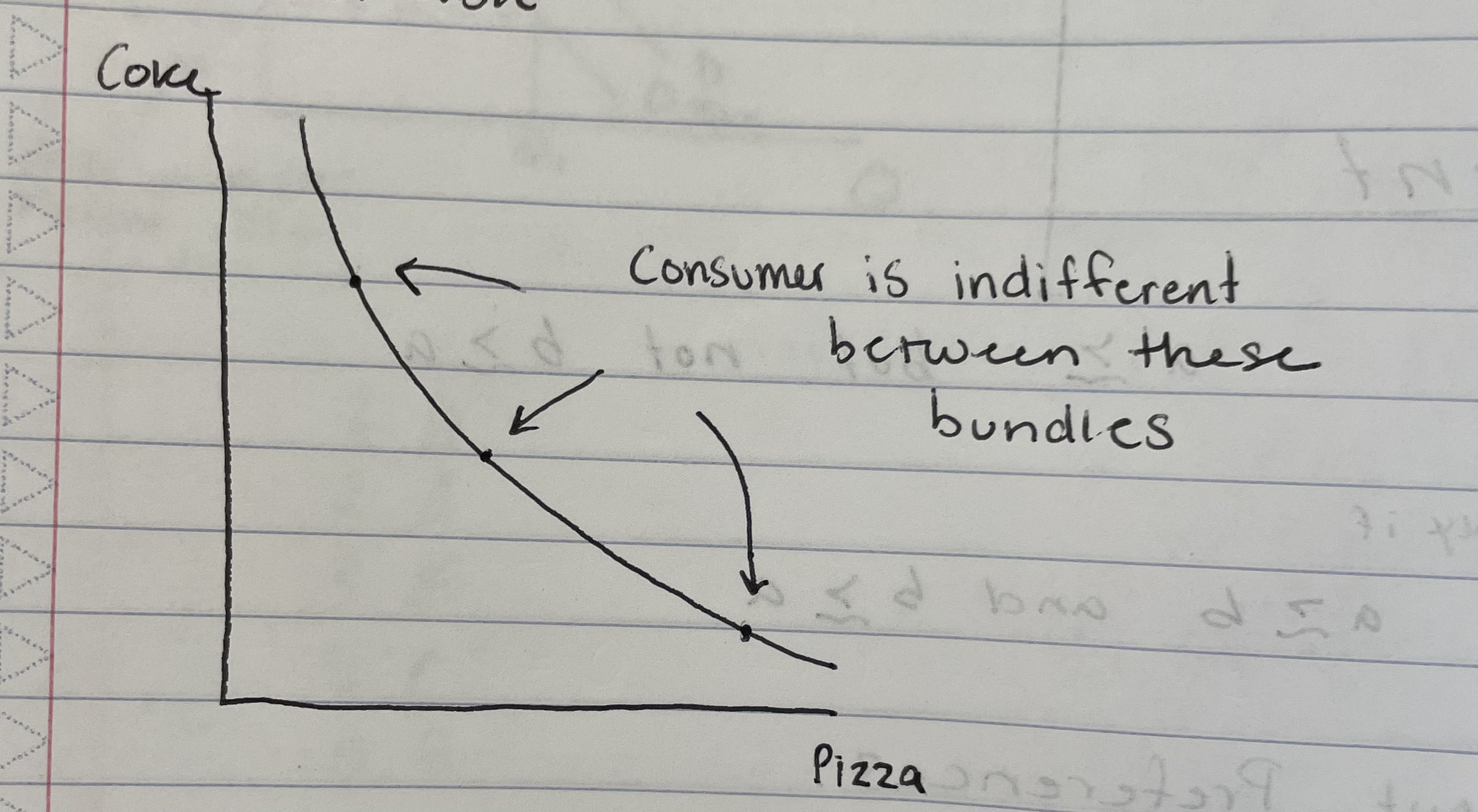
5 Principles of Indifference Curves
Bundles on indifference curves farther from the origin are preferred
An indifference curve goes through every possible bundle
Indifference curves cannot cross
Indifference curves slope down
Cannot be thick
Utility function
relationship between utility and bundle of goods.
u(x) assigns a numerical value to bundle x
Utility functions are ____ not cardinal
Ordinal - interested in relative rankings of bundles, not by how much one bundle is preferred to the other. (As long as the order of preference remains consistent we can transform utility functions)
along the indifference curve, utility is…
fixed
What does the MRS measure?
the maximum amount of one good a consumer will sacrifice to obtain one more unit of another good
MRS Formula
slope of the indifference curve (derivative)
MRS = dq2/dq1 (or -U1/U2)
Marginal utility
extra utility from consuming last unit (MU)
MU = dU/dq
MRS and MU
dq2/dq1 = -MU1/MU2
Cobb-douglas shortcut

MRS = aq2/bq1
(*Remember that q2 goes on top*)
Indifference curves for perfect substitutes
A linear line - willing to substitute one good for another at a constant rate
Principles still apply
Usually have the form: U= iq1 + jq2 (i & j being constants)
(MRS = i/j, independent of q1, q2)
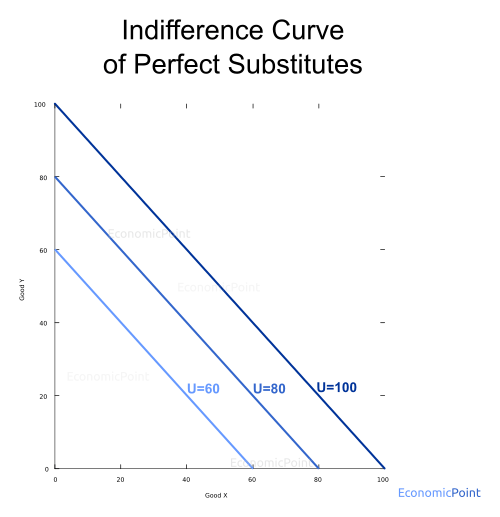
Indifference curves for perfect complements
not differentiable

Indifference curves for Cobb-Douglas
convex indifference curve
two goods are imperfect substitutes
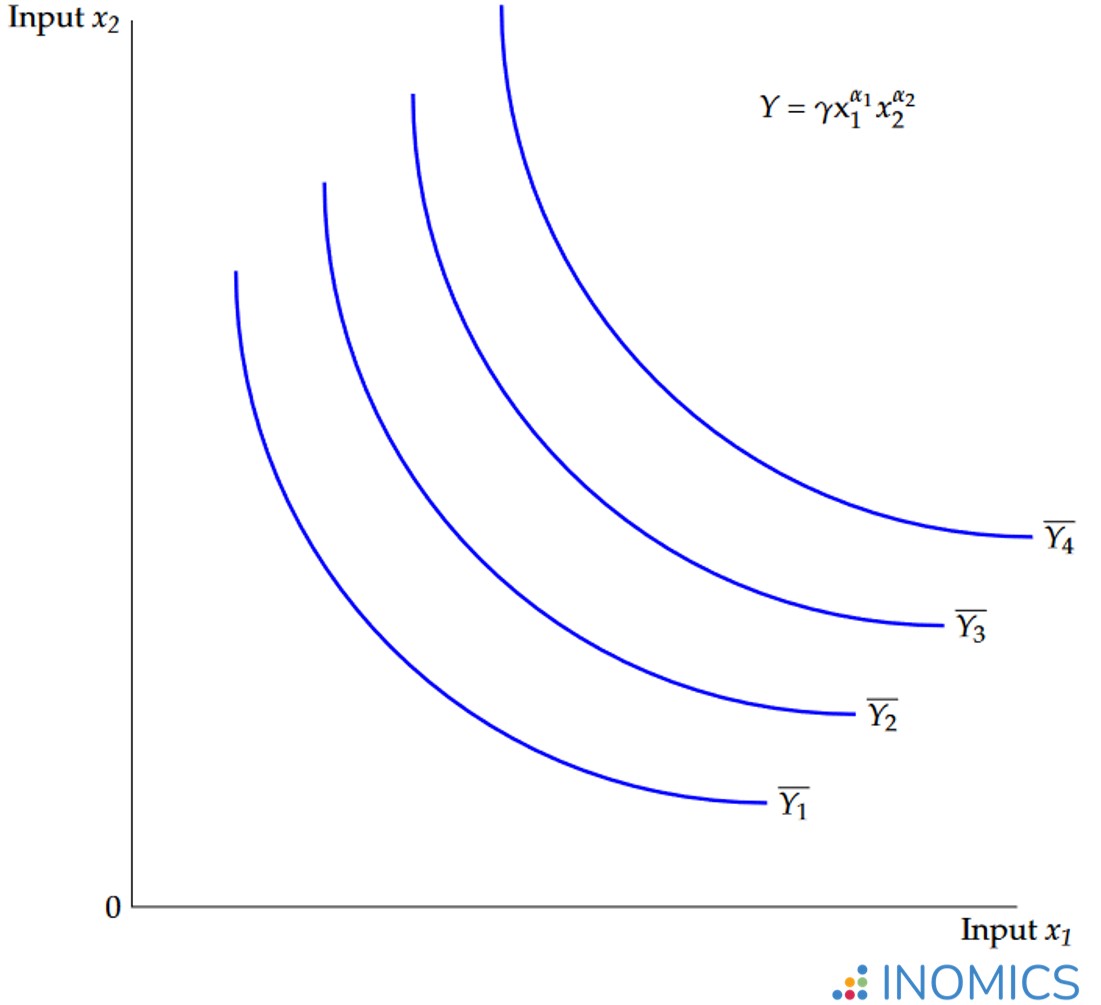
Budget constraint formula:
Y = p1q1 + p2q2
Marginal rate of transformation (MRT)
Slope of the budget constraint
MRT = -p1/p2
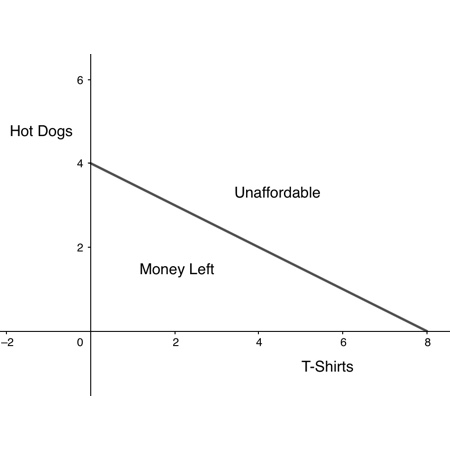
What’s the difference between MRS and MRT?
MRS - must stay on indifference curve (what are my preferences?)
MRT - to consume more of one good, you move along the budget curve (what can I actually buy?)
What happens if there is a price increase for budget constraints?
rotates in or out (like PPF)
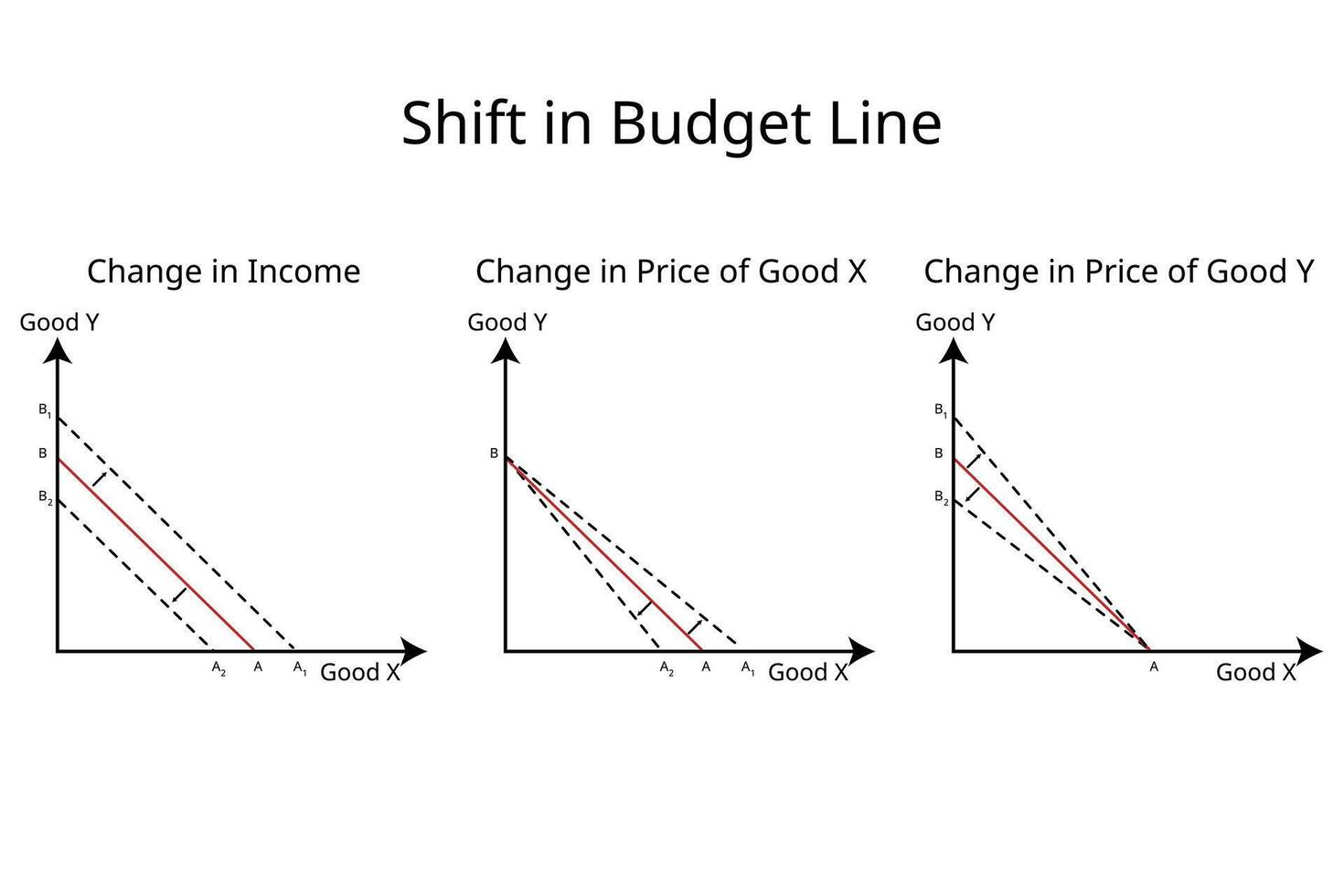
Constrained consumer choice: Interior Solution
Consumes positive amount of both goods, (i.e. q1 > 0 and q2 > 0)

Constrained consumer choice: Corner Solution
Consumer is only consuming one good. (i.e. q1 = 0 or q2 = 0)
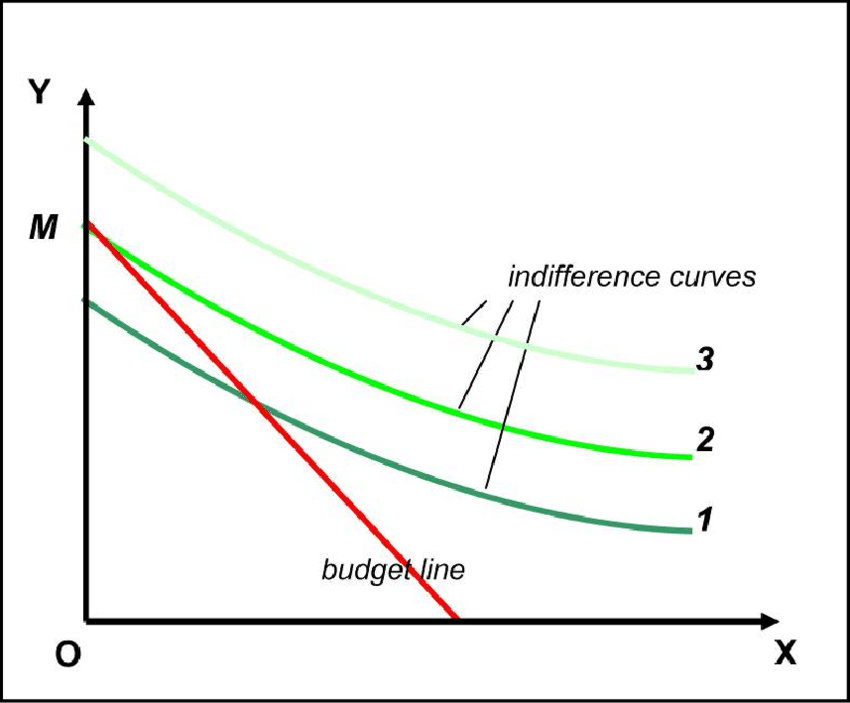
Methods of finding optimal bundle (2)
Highest indifference curve rule
Always works for interior or corner solution
Tangency rule: MRT = MRS
Only works for interior solution where the indifference curve is smooth, downward sloping, and convex to the origin
How to find where MRT = MRS
Set them equal:
U1/P1 = U2/P2 (marginal utility per dollar)
Steps to optimize utility given budget constraint (5):
Find MU for q1 and q2 (take derivatives)
Set -U1/U2 to find MRS
Set MRS = MRT
Find q1 in terms of q2
Plug into budget constraint formula
Plug q*1 anywhere to find q*2
Trick to find optimal bundle for Cobb-Doulgas examples
a = what % of income are you spending on good

If our utility function’s indifference curve does not hit the axes, then the consumers optimal bundle must be on the _____
interior
Ex:

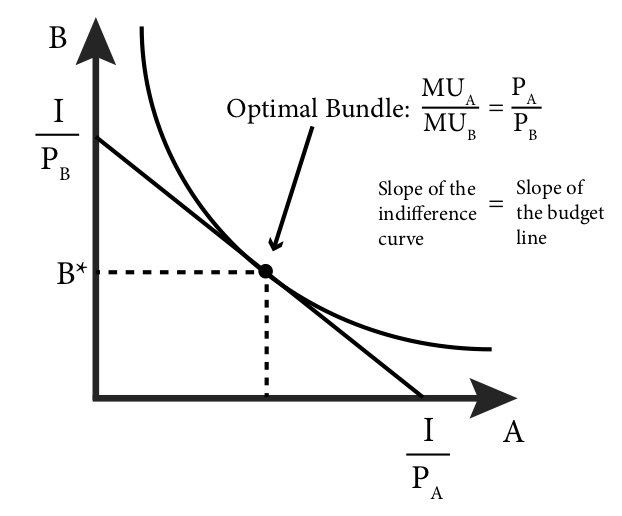
Finding corner solutions:
For perfect substitutes:
U(q1, q2) = q1 + q2
If the slope of MRS and MRT don’t match, you can only consume all of one good to maximize utility
3 Key Rules for Corner Solutions:
If U1/P1 > U2/P2 → only consume good 1
If U1/P1 < U2/P2 → only consume good 2
If U1/P1 = U2/P2 → you can choose any combo - you’re indifferent along the BC
What is a quasi-linear utility function?
U = U(q1) + q2
the MRS does not depend on the constant (q2)
(EX: U(q1, q2) = 4q10.5 + q2)
How to find optimal consumption bundle for quasi-linear utility functions? (2 steps)
Use tangency rule and BC to check for interior solution
If q1 or q2 is negative the marginal utilities per dollar don’t match, so check where U1/P1 > U2/P2 or U1/P1 < U2/P2
(the negative q indicates that it is a corner solution, and therefore we only consume one good)
What does the general utility function look like for perfect compliments? α β
U(q1, q2) = min(αq1, βq2)
What does the convex shape of an indifference curve tell us?
Diminishing MRS
Consumers prefer a balanced combination of goods rather than extremes
(as you move along the curve, you are willing to give up less and less of one good to get an additional unit of the other good while maintaining a fixed utility)
The MRS is the number of ____the agent is willing to give up to get 1 unit of ____
good 2 (q2), good 1 (q1)
**What is the difference between ordinal and cardinal measurement?
An ordinal measure ranks/orders items without specifying the magnitude of differences between them. (E.g., utility functions are ordinal measures because they rank bundles of goods; they don’t tell us the magnitude of preferences between bundles)
A cardinal measure provides a numerical representation of the magnitude between different items. (E.g., production functions are cardinal because they tell us the magnitude levels of production)